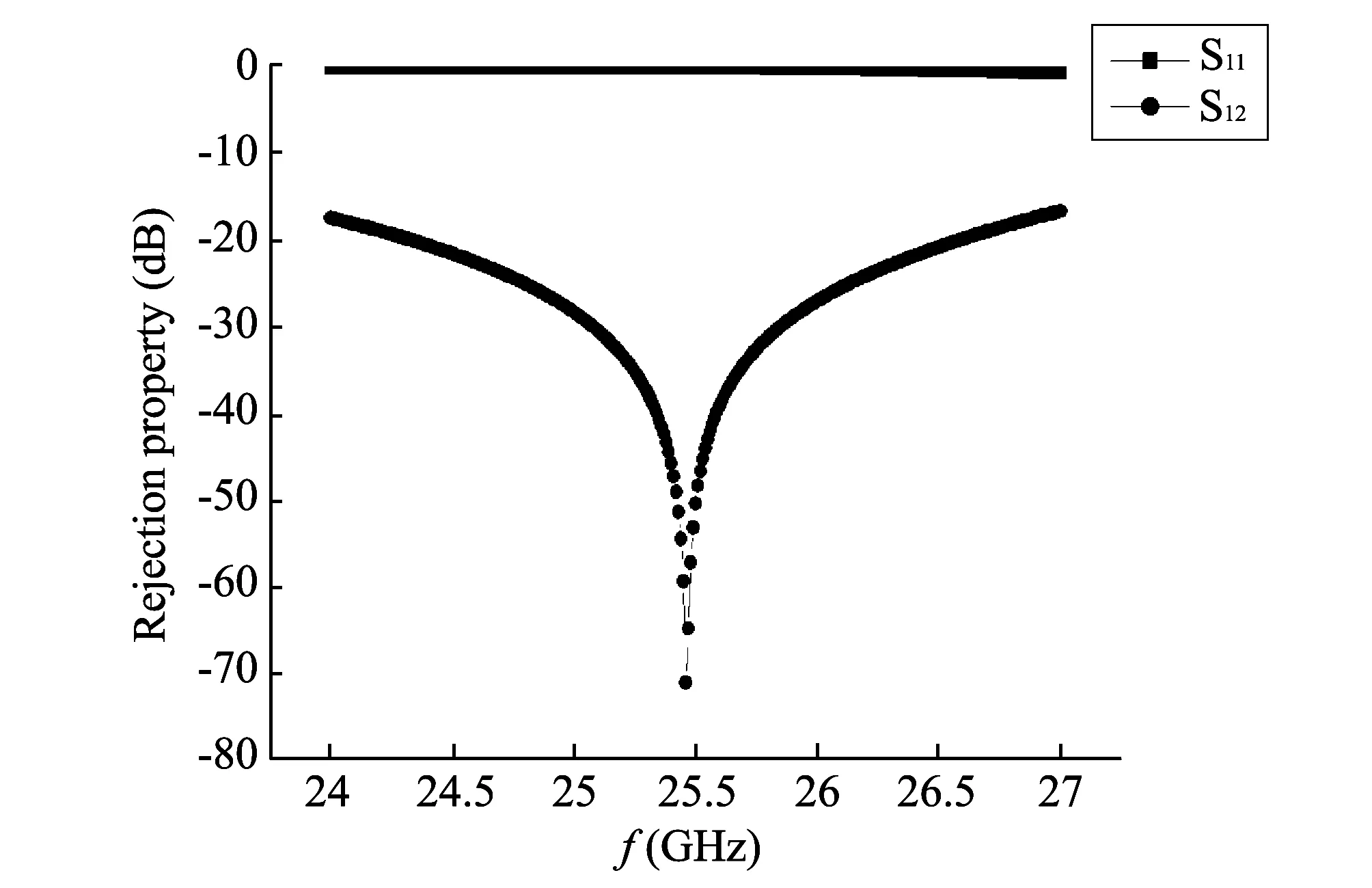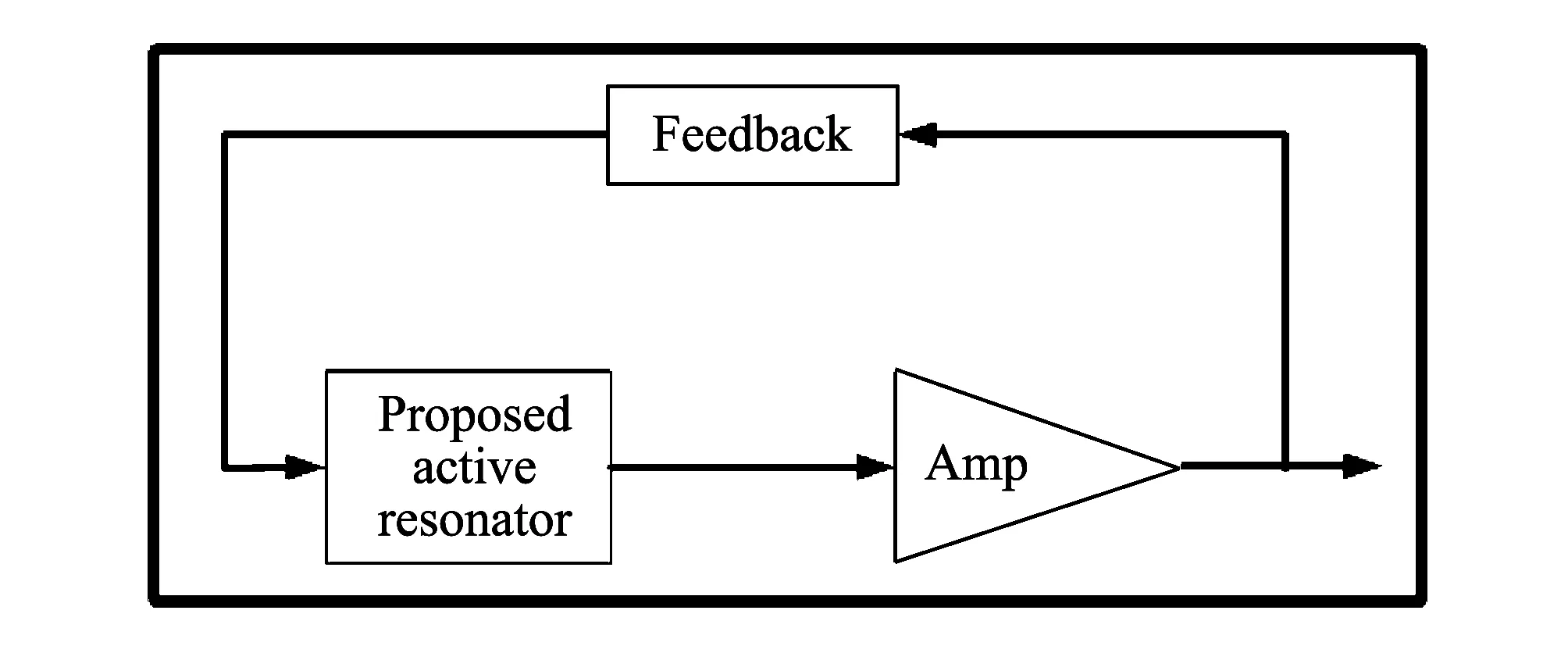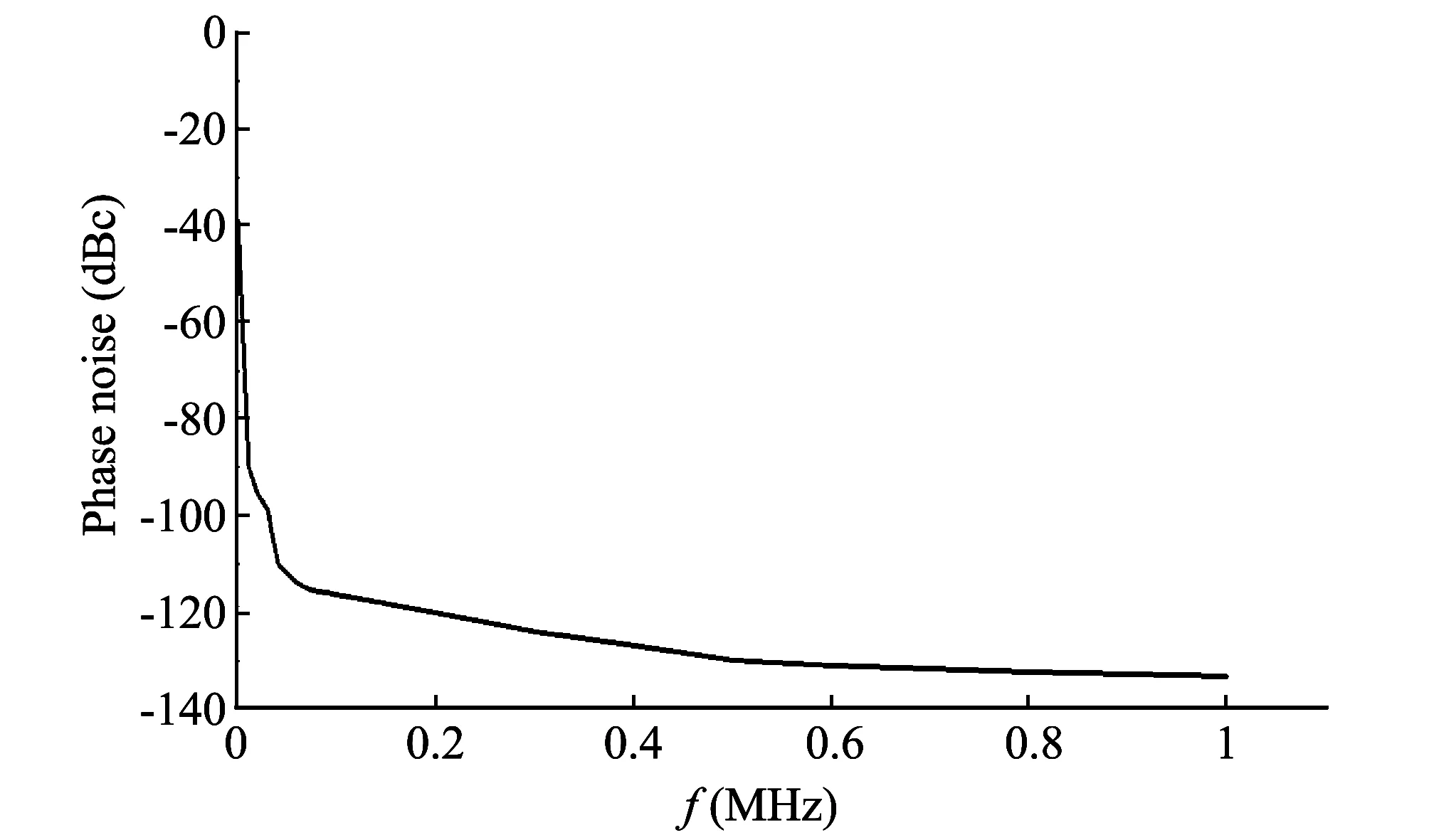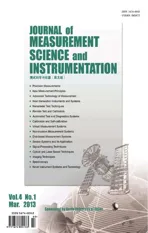An oscillator with low phase noise based on active resonator using metamaterial in K-band
2013-11-01WooseokShimChongminLeeChulhunSeo
Wooseok Shim, Chongmin Lee, Chulhun Seo
(Dept. of Electronics Engineering, Soongsil University, Seoul 156-743, Korea)
An oscillator with low phase noise based on active resonator using metamaterial in K-band
Wooseok Shim, Chongmin Lee, Chulhun Seo
(Dept. of Electronics Engineering, Soongsil University, Seoul 156-743, Korea)
An oscillator (OSC) with a metamaterial resonator based on high-Q is designed to improve the phase noise in K-band. The proposed metamaterial resonator is a lattice structure resonator (LSR) that is designed to be high-Q by a strong coupling of E-field at the resonance frequency. Thus the output of OSC is about 12.5 dBm at the f0. The phase noise is -109.477 dBc/Hz at 100 kHz offset frequency.
metamaterial; oscillator(OSC); phase noise
0 Introduction
The proposed oscillator (OSC) is designed in order to use in the reflectometry to diagnostic of plasma state information for Korea Superconducting Tokamak Advanced Research (KSTAR). The proposed OSC yields an output signal to diagnostic at the output stage of the reflectometry. To detect the accurate information about the plasma state, OSC needs the superior phase noise. Thus, we use a metamaterial resonator with high-Q based on lattice struture.
These are metamaterials composed of sub-wavelength constituent elements that make the structure behave as an effective medium with negative values of permittivity and permeability at the frequencies of interest. The properties of such media were already studied by Veselago[1]over 30 years ago. Due to the simultaneous negative values of ε and μ, the wave vector k and the vectors E and H (the electric- and magnetic-field intensity), known as triplet, yield the anti-parallel phase and group velocities, or backward-wave propagation.
Pendry[2], the variant structures were experimentally verified in the region of microwaves. If the excitation electric field E is parallel to the axis of the rod medium, the propagated wave will stop in a spatial frequency band and receive negative permittivity. Also, if the excitation magnetic field H is perpendicular to the plane of the split-ring resonators, the propagated wave will stop in the spatial frequency band and receive negative permeability[3,4].
These resonators using metamaterial structure have the strong E- and H-field coupling by the structural characteristics. We have taken high-Q resonance characteristics through this result. Thus, it is possible using that filter with superior skirt and OSC with low phase noise[5-10].
1 Proposed metamaterial resonator
1.1 Analysis of resonator
The proposed resonator is presented in Fig.1, which can be describe by using LC equivalent circuit model.
When time varying magnetic field penetrates the SR specifically, a current can be induced along the SR. Then a distributed inductance is generated in proportion to the length of the resonator, and a mutual inductance is also generated between the lines of resonator. The charge distribution in the resonator is depicted in Fig.1. Distributed capacitance between inside and outside lines and fringing capacitances at the end of lines are generated. These fringing capacitances are equivalently connected in series. Consequently, the equivalent circuit model of the resonator can be represented as Fig.2.

Fig.1 Proposed resonator

Fig.2 Equivalent circuit
1.2 Design of resonator
The resonant frequency of the proposed resonator is decided a size of a resonator and a gap of microstrip line. Therefore, the resonator is designed in order to oscillation at K-band by using EM simulator. The Table 1 shown each parameter.

Table 1 Resonator’s parameters
1.3 Active resonator
The loss of the resonator can be compensated by properly adjusting the negative resistance using active device. Therefore, a lossless resonator can be obtained theoretically. The schematic of the simulation result of active resonator is obtained.
The proposed active bandstop resonator using the amplifier is shown in Fig.3. A power is injected into port 1 and coupled to ports 2 and 3. The power from port 3 is then amplified and injected to port 2 in the opposite direction[11].

Fig.3 Proposed active resonator
1.4 Active resonator design
The active resonator is fabricated using a TLC-32 of Taconic substrate and simulated using ADS2009 of Agilent.
Fig.4 shows resonant frequency at 25.5 GHz. The rejection property has -75.477 dB. Thus, the proposed active resonator performs a little ripple and superior skirt property. Also, an active resonator gets very high-Q value.

Fig.4 Simulation result of active resonator
2 Oscillator
2.1 Design of OSC
As depicted in Fig.5, the proposed OSC consists of a resonator part, a feedback loop for negative resist and an output matching network. The active device is an NEC 3210S01.
The proposed resonator is connected to the gate of an active device and a feedback loop circuit is directly connected to the source.

Fig.5 Block diagram of the proposed OSC
2.2 Simulation
The proposed OSC is biased by Vgs=-0.4 V and Vds=4 V. For the simulation, the Agilent’s ADS2009 has been used.

Fig.6 Phase noise of the proposed OSC
As shown in Figs.6 and 7, the phase noise is a -109.477 dBc/Hz at 100 KHz offset frequency and the output power is 12.541 dBm, respectively.

Fig.7 Output power spectrum of the proposed OSC
The high output power and low phase noise are obtained by the strong coupling and the increasing capacitance of the lattice structure resonator (LSR) as mentioned above.
3 Conclusion
We have designed a low phase noise OSC based on metamaterial resonator with high-Q in K-band for reflectometry system. The proposed metamaterial resonator is a LSR that is designed to be high-Q by a strong coupling of the E-field at the resonance frequency.
Also, the active device placed in the resonator compensates the loss from line impedance and low coupling.
The output of OSC is -74.477 dB at K-band. The phase noise is -109.477 dBc/Hz at 100 kHz offset frequency.
[1] Veselago V G. The electrodynamics of substances with simultaneously negative values of epsilon and mu. Soviet Physics Uspekhi, 1968, 10: 509-514.
[2] Pendry J B. Negative refraction makes perfect lens. Physical Review Letters, 2000, 85: 3966-3969.
[3] Solymar L, Shamonina E. Wave in metamaterials, New York: Oxford University Press, 2009.
[4] Caloz C, Itoh T. Electromagnetic metamaterials: transmission line ttheory and microwave applications. Wiley Interscience, New York, 2006.
[5] Shelby R A, Smith D R, Nemat-Nasser S A, et al. Microwave transmission through a two dimensional isotropic left handed metamaterial. Applied Physics Letters, 2001, 78(4): 489-492.
[6] Marques R, Baena J D, Martin F, et al. Left-handed metamaterial based on dual split ring resonators in microstrip technology. In: Proceedings of International Union of Radio Science Electromagnetic Theory Symposium, 2004: 1188-1190.
[7] Sihvola A, Yla-Oijala P, Jarvenpaa S, et al. Searching for electrostatic resonances in metamaterials using surface integral equation approach. Piers, 2007, 3(1): 118-121.
[8] Baena J D, Bonache J, Martin F, et al, Equivalent-circuit models for split-ring resonators and complementary split ring resonators coupled to planar transmission lines. IEEE Transactions on Microwave Theory and Techniques, 2005, 53(4): 1451-1461.
[9] Lin I H, Caloz C, Itoh T. Transmission characteristics of left handed non uniform transmission lines. In: Proceedings 2002 Asia-Pacific Microwave Conference, Kyoto, Japan, 2002, 3(19/22): 1501-1504.
[10] Caloz C, Okabe H, Iwai H, et al. Transmission line approach of left handed metamaterials. In: Proceedings of USNC/URSI Natural Radio Science Meeting, San Antonio, TX, 2002, 39: 39-41.
[11] Lee Y T, Lee J C, Nam S W. High-Q active resonators using amplifiers and their applications to low phase-noise free-running and voltage-controlled oscillators. IEEE Transactions on Microwave Theory and Techniques, 2004, 52(11): 2621-2626.
date: 2012-09-12
Chulhun Seo (chulhun@ss.ac.kr)
CLD number: TM935.1 Document code: A
1674-8042(2013)01-0074-03
10.3969/j.issn.1674-8042.2013.01.016
杂志排行
Journal of Measurement Science and Instrumentation的其它文章
- Image enhancement and post-processing for low resolution compressed video
- Acetonitrile (CH3CN) and methyl isocyanide(CH3NC) adsorption on Pt(111) surface: a DFT study
- Erosion thermocouple temperature acquisition system
- Dynamic calibration method of capacitive pressure measuring device
- Automatic measurement of air-pressure sensor based on two-pressure control instrument
- An experiment to estimate the revolution of DC motor
